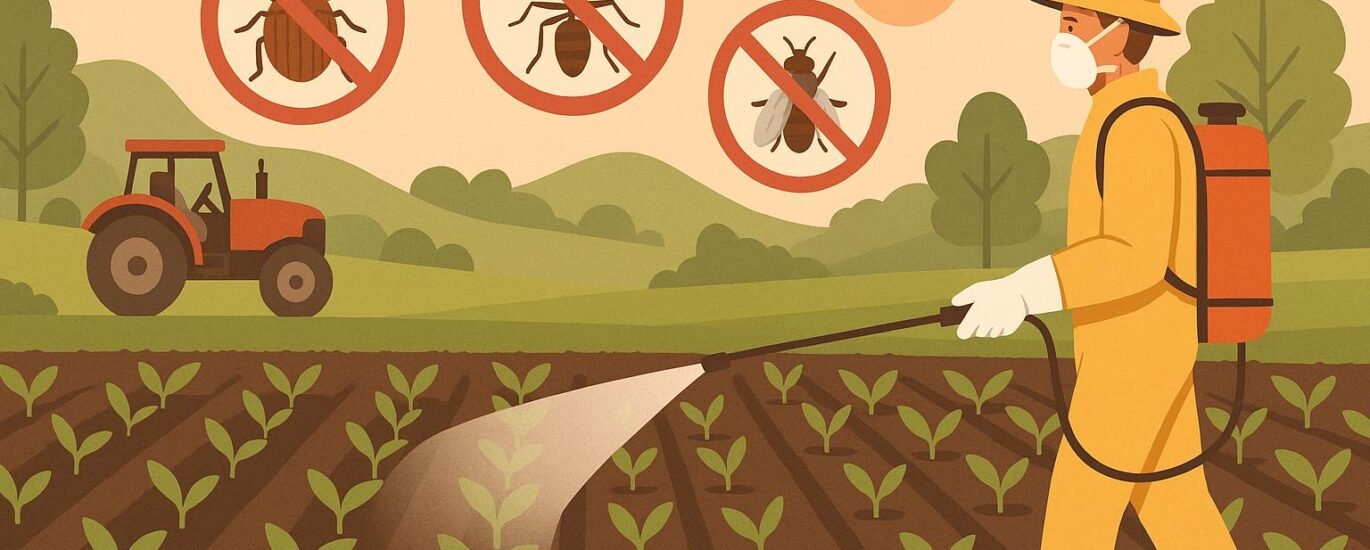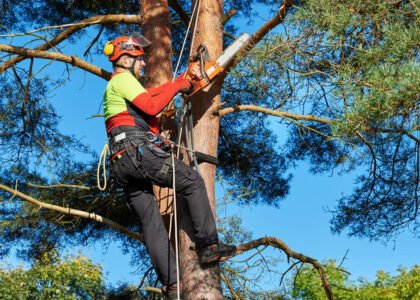Pest control in agriculture has never been a one-dimensional challenge. With each season, crops are threatened not just by a single type of pest but by a mosaic of destructive insects, each with unique feeding habits, lifecycles, and vulnerabilities. Among the most persistent enemies are sap feeders, such as aphids and whiteflies, as well as boring insects like stem borers and root weevils, and a host of leaf-chewing and mining insects. The pressing question for many growers today is: Can one insecticide effectively manage them all?
The short answer is – it depends on the chemistry, mode of action, and formulation. But some modern insecticides, especially those with systemic activity and translaminar movement, have shown an impressive ability to tackle a diverse pest complex. This blog examines whether a single active ingredient or product can effectively defend crops against such diverse threats, how these insecticides work, and what factors to consider when selecting them for comprehensive field protection.
The Pest Behavior: Why a Multi-Spectrum Approach Matters
To appreciate the scope of this challenge, it’s helpful to examine how these insect types behave and where they inflict damage:
- Sap feeders (aphids, mealybugs, whiteflies, and psyllids) feed by piercing plant tissues and extracting nutrients, often transmitting viruses in the process.
- Boring insects (borers, grubs, and weevils) tunnel into stems, trunks, roots, or fruits, making them difficult to reach with contact sprays.
- Chewers and miners (caterpillars, beetles, leaf miners) create visible, physical damage on leaves and developing produce.
Each category targets a different part of the plant. That’s why relying solely on surface-level control often fails. What growers need is a product that reaches multiple pest feeding sites, including internal tissues and hard-to-access plant parts.
Certain insecticides, such as Lesenta 80 WG, are made specifically to enter plant tissue and stay active within the vascular system. Because of this internal activity, pests that feed from within are addressed equally as well as those that feed on the outside. When dealing with mixed pest populations at different phases of crop development, especially when sucking and boring insects co-occur, many farmers decide to use Lesenta 80 WG insecticide. Its mode of action and residual potency are what give it its versatility.
The Role of Systemic Insecticides in Broad-Spectrum Control
Systemic insecticides provide internal protection by being absorbed by the plant and moving to various tissues. This enables them to target borers that feed inside stems, shoots, or roots as well as sap feeders that pierce phloem or xylem channels.
These pesticides frequently fall within the diamide, anthranilic, or neonicotinoid groups. They cause paralysis and death after ingestion, sometimes even before obvious eating damage manifests, by interfering with insect brain connections or muscular control.
- Residual control: Some systemic insecticides remain active in the plant for weeks, reducing the need for frequent applications.
- Preventive coverage: Application at early crop stages can protect plants from initial infestation waves.
However, while systemic action provides strong protection against internal feeders, combining it with a contact or translaminar agent enhances surface-level control and improves overall coverage.
Translaminar Movement: A Bonus for Leaf-Based Feeding
The term “translaminar activity” refers to the insecticide’s ability to redistribute itself throughout the leaf tissue after penetrating the leaf surface. This is essential for controlling pests that hide inside or under leaves, such as spider mites and leaf miners.
Even in dense canopies, a chemical that possesses both systemic and translaminar characteristics can combat embedded and surface dangers in a single spray. Better leaf integrity, healthier photosynthesis, and decreased susceptibility to fungal infections result from reduced physical damage.
Products with this movement profile are especially useful in crops like tomatoes, peppers, grapes, and cucurbits, where leaf integrity directly affects yield and marketability.
Resistance Management and the Importance of Multi-Target Insecticides
Around the world, insect resistance is becoming a bigger issue. Season after season of exposure to a single active chemical might cause changes in pests that make them impervious. This is where broad-spectrum insecticides excel, not just because they manage a wide variety of pests but also because they frequently have numerous mechanisms of action or target different insect receptor sites.
Using one product to target various pests can:
- Delay the development of resistance across pest populations.
- Reduce overall chemical usage by avoiding over-application.
- Simplify tank mixes and application schedules.
Still, even with multi-target formulations, growers should rotate chemical classes and follow IRAC guidelines to protect product efficacy across seasons.
“Pest control isn’t just about killing insects—it’s about disrupting their patterns before they even reach the threshold.”
Environmental Considerations and Beneficial Insect Safety
Non-selectivity is one of the issues with multi-target pesticides. Beneficial species, such as pollinators, predators, or parasitoids, may be impacted when a product affects a large number of pests. Today’s formulations are therefore designed to minimize off-target effects by utilizing targeted application techniques and innovative chemistry.
When used early in the crop cycle, before blooming or the peak of pollinator activity, insecticides with systemic action can help minimize contact exposure to non-target organisms.
Additionally, to reduce environmental load, timing and thresholds are guided by precision spraying and decision support systems, such as CropLife’s IPM resources.
Ideal Crop Scenarios for Multi-Spectrum Insecticides
Some crops benefit more than others from insecticides that can control a diverse range of pests. These include:
- Citrus: Vulnerable to psyllids, aphids, and trunk borers. Systemic insecticides move throughout the tree to protect all tissues.
2. Cotton: Hosts whiteflies, thrips, bollworms, and stem borers—all at different growth stages. One product that handles multiple threats reduces complexity.
3. Grapes: Faces mealybugs, grape berry moths, and leafhoppers. Internal feeding protection is essential for reducing virus transmission.
4. Soybeans: Often suffer from aphids, armyworms, and rootworms. One treatment that targets all stages reduces yield drag and labor costs.
In isolated fields where regular reapplication is impractical or during fast-growing seasons, using a single instrument with an expanded reach can help reduce gaps in protection, save time, and lower costs.
FAQs
- Can a single insecticide really control both sap feeders and borers effectively?
Yes, if the product is systemic and targets multiple pest types through ingestion and contact. However, effectiveness depends on timing, application method, and resistance status. - Are systemic insecticides safe for fruiting vegetables?
Many systemic insecticides are labeled for use on fruiting crops and have pre-harvest intervals (PHIs) that ensure the safety of residues. Always follow label directions. - What happens if pests become resistant to multi-spectrum insecticides?
Even broad-spectrum tools must be rotated with different modes of action. Resistance can still develop if overused. Combining strategies with cultural and biological control helps preserve effectiveness. - Is it better to apply insecticides preventively or reactively?
Systemic and long-residual products are most effective when applied preventively or at early infestation stages. Reactive applications often require higher doses and offer shorter windows of control.
Rethinking Pest Control Efficiency
The era of using one product for one pest is fading. Today’s farms are ecosystems under pressure from multiple fronts—weather, pests, labor constraints, and input costs. In this context, the ability to control a spectrum of threats with a single insecticide becomes more than a convenience—it becomes a strategic asset.
Today’s finest products are tools designed with crop behaviour, pest biology, and environmental effect in mind, not just chemical remedies. When used properly, the correct pesticide can reduce your burden, extend your control window, and protect the entire value of your crop, regardless of how many acres you’re managing.
Consider your crop’s pest range, seasonal timing, and long-term resistance plan when making your decision rather than relying solely on habit or label claims. One product can sometimes accomplish more than you may imagine. And that’s where the true power is found—in how you utilize it, not just in the chemistry.






